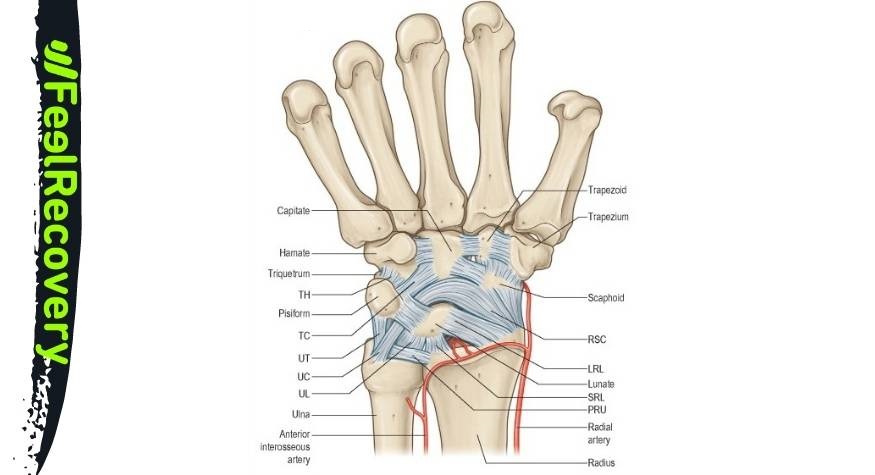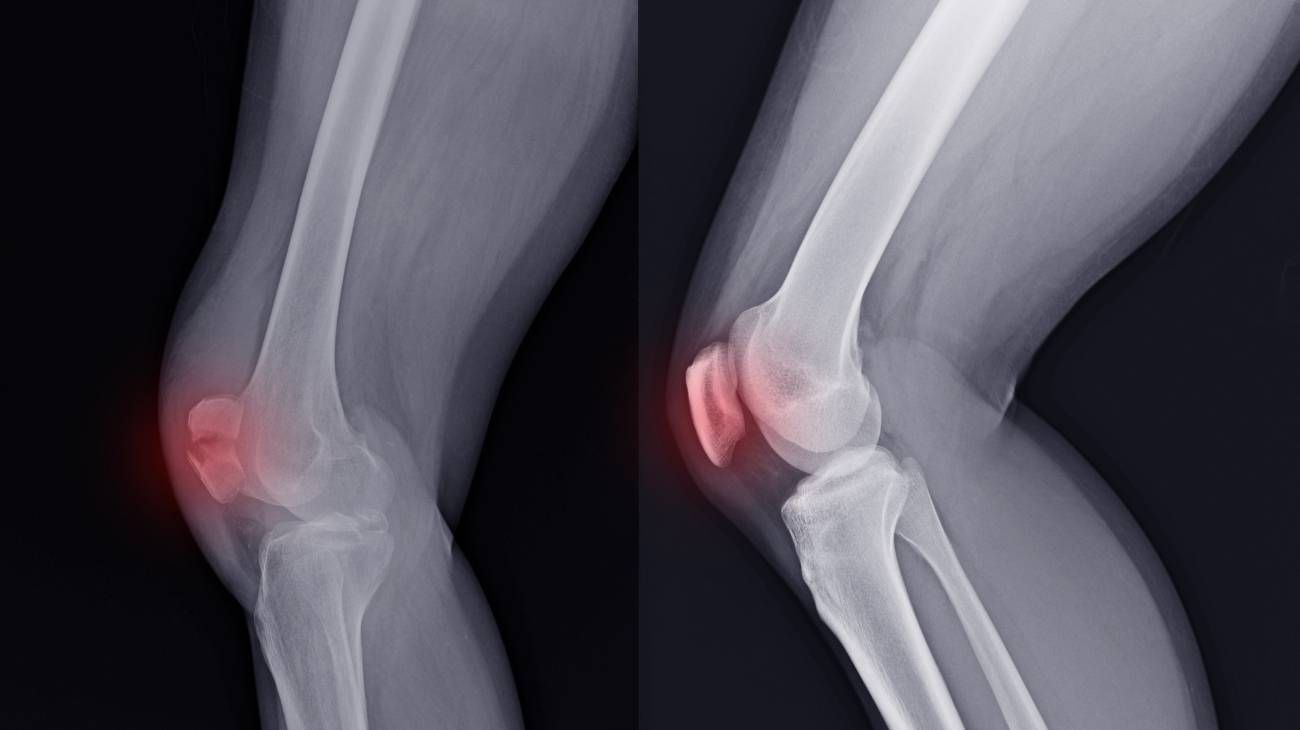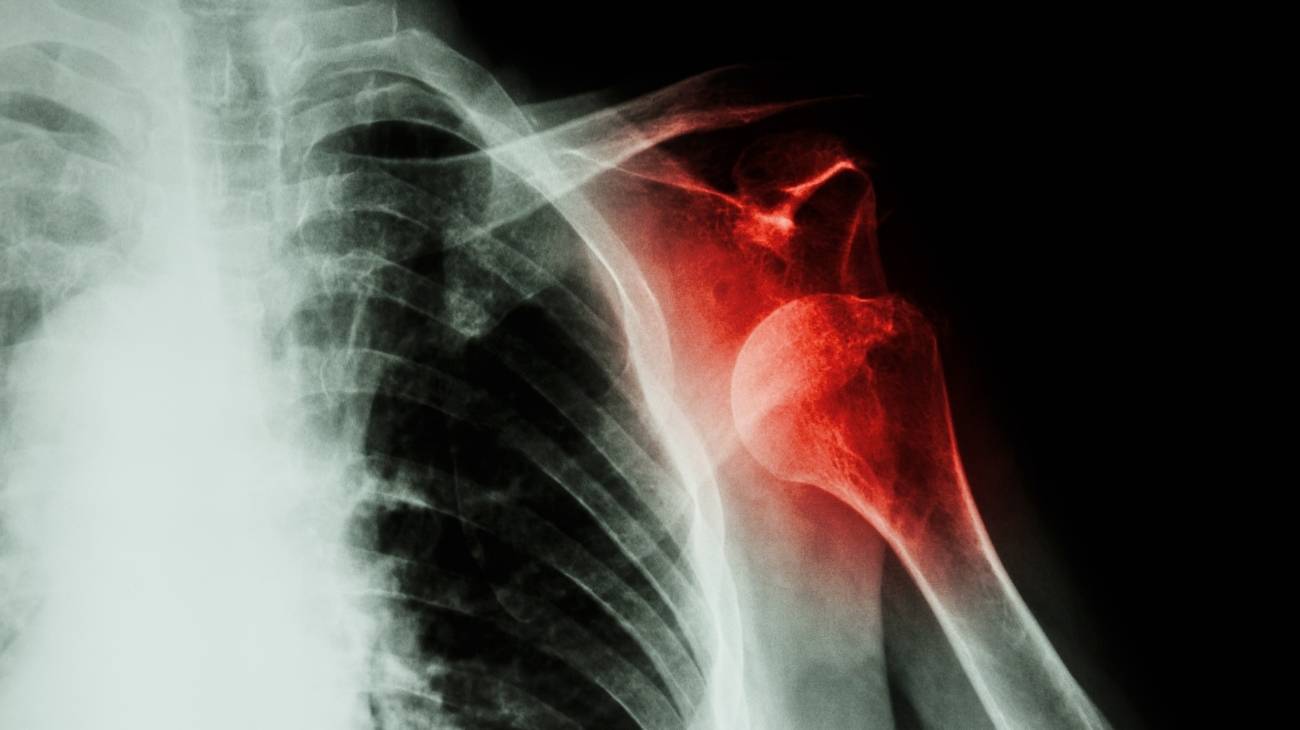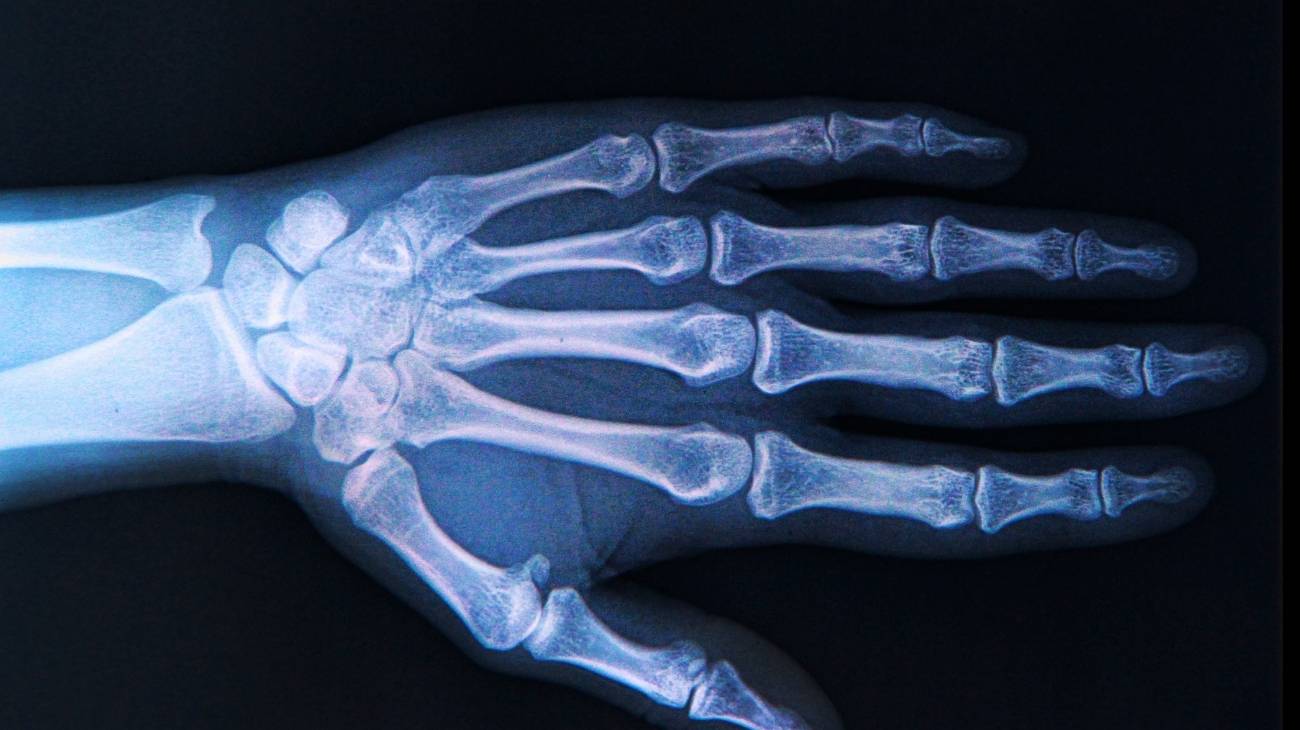- What is dislocation of the wrist joint?
- What are the causes and risk factors for wrist dislocation?
- Best products for wrist dislocation
- Main signs and symptoms that warn us that we have a dislocated wrist
- What is the first aid for a dislocated wrist?
- What are the most effective prevention methods for wrist dislocation?
The structure of the bones of the hand requires a large number of joints and connections between these bony tissues. When there is a separation between the faces of the 8 carpal bones, a wrist dislocation occurs, causing great pain in the palm and at the end of the ulna.
If you want to know more about what a wrist dislocation is, you should continue reading because we will explain the symptoms and risk factors that cause this trauma. It is important that you pay attention to the first aid steps that we will show you because with them you will be able to treat a traumatised patient.
What is dislocation of the wrist joint?
The displacement that occurs between the carpal bones of the wrist, especially the large bone and the lunate with the ulna, is known as wrist dislocation and is sometimes confused with what is commonly called an open wrist. This slippage can be complete if both sides of the bones are no longer in contact, if this does not occur and there is a small separation, this trauma is known as wrist subluxation.
The traumatized patient will not be able to make any movement with the hand due to the acute pain that will be felt immediately. The recovery time for this joint to be completely aligned is 15 days, but in more severe cases it can be up to 10 weeks
What are the causes and risk factors for wrist dislocation?
The risk factors for wrist dislocation are:
- Sports or domestic falls: It is common to find patients with trauma to the wrist after they have suffered blows to this part of the body when falling and resting their hand in the first place. Sports such as cycling are prone to this type of injury.
- Previous trauma: Blows and trauma to the wrist can cause weakening of the tendons that support the bones in the fingers and wrist. This increases the risk of dislocation in the future.
- Joint strain: Lifting heavy objects or requiring the wrist to perform constant repetitive movements leads to continuous muscle and tendon wear and tear. This increases the risk of dislocation.
- Not wearing compression garments: The use of wrist braces in certain patients helps to keep the joint in the right place, improving blood circulation. If this type of protection is not used, slippage of the carpals with the forearm is possible.
- Ligament weakness: The patient's advanced age can lead to loss of strength in muscles and connective tissues, which increases the risk of dislocation.
- Arthritis and other diseases: Wear and tear on cartilage causes bones to move against each other. Osteoporosis is a condition that directly affects bone strength, making dislocation easier.
- Stress: Stressed people suffer from muscle contractures, which significantly affect the wrist joint. Sudden, abrupt movements can cause the bones to slip.
Best products for wrist dislocation
Bestseller
-
Acupressure Mat and Pillow (Black/Gray)
£44,95 -
Acupressure Mat and Pillow (Green/Navy)
£44,95 -
Acupressure Mat and Pillow (Pink/Bordeaux)
£44,95 -
Foot Massage Roller for Plantar Fasciitis (Black)
£17,50 -
Foot Massage Roller for Plantar Fasciitis (Green)
£17,50 -
Foot Massage Roller for Plantar Fasciitis (Pink)
£17,50 -
Microwave Arthritis Gloves (2 Mittens) (Hearts)
£25,50 -
Microwave Arthritis Gloves (2 Mittens) (Oxford)
£25,50 -
Microwaveable Wheat Bag for Pain Relief (Hearts)
£17,50 -
Microwaveable Wheat Bag for Pain Relief (Oxford)
£17,50 -
Microwaveable Wheat Bag for Pain Relief (Sport)
£17,50 -
Wrist Brace (Black/Gray)
£17,50 -
Wrist Brace (Green/Navy)
£17,50 -
Wrist Brace (Pink/Bordeaux)
£17,50
Main signs and symptoms that warn us that we have a dislocated wrist
The symptoms that will warn of a dislocated wrist are:
- Misalignment of the joint: A characteristic symptom of this trauma is when there is a deformity to the naked eye, keeping the wrist twisted involuntarily.
- Pain: The pain that is generated when a dislocation occurs is intense and usually occurs between the carpals and the forearm. In some cases it can cause fainting.
- Joint stiffness: It is common to find a traumatised person unable to move the wrist. This is due to a lack of connection between the different bones that make up the joint and severe pain.
- Inflammation: Fluid accumulation occurs immediately causing a quite considerable increase in volume to the touch and to the naked eye.
- Bruising: Bruising can occur due to the concentration of blood in the wrist.
- Abnormal biomechanical movements: A dislocation can also cause the wrist to perform actions with greater biomechanical amplitude than normal due to the lack of union between the bones.
- Numbness in the forearm and fingers: Paresthesia and lack of sensation are common when there is a wrist dislocation, either partial or complete.
What is the first aid for a dislocated wrist?
The steps to take for a dislocated wrist are summarised in the physiotherapy first aid protocol called PRICE. This method, whose name is an acronym of the first letters of the stages, is accepted worldwide, but it must be taken into account that the trauma must be mild to be able to apply it.
The steps to treat a dislocated wrist are
- Protection of the wrist and hand: This should be done to prevent further injury or infection, especially if it is an open dislocation. Ideally, the patient should be kept in a safe place to reduce the risk of aggravating the injury.
- Resting the trauma patient: The next step is for the patient to stop the activity that caused the displacement of the wrist bones. In addition, the person should be kept in a cool, clean and ventilated place.
- Immediate application of cold: Once the patient is at rest and the wrist is protected, it is necessary to apply cold temperature to prevent swelling and reduce pain. This can be done by using cold gel packs or ice for up to 20 minutes.
- Compression bandage: To improve blood circulation and support the wrist, it is advisable to keep it as fixed as possible. Elastic compression wrist braces can be used to help minimise vibration, as compression therapy helps speed recovery.
- Keeping the wrist elevated: Elevation is the last step in the first aid method. It involves keeping the wrist above the level of the heart to prevent blood pooling in the affected area and reduce blood pressure, thereby reducing swelling in the injured area.
Once you have completed these steps you need to call the emergency medical centre to intervene in this trauma and the specialist doctor can diagnose the correct treatment for the specific case and can perform an x-ray to see the extent of the injury and rule out a possible fracture.
What are the most effective prevention methods for wrist dislocation?
Wrist dislocation can be prevented by considering these methods:
- Avoid all types of falls: At this point it is necessary to mention not only sports or work activities, but also everyday household chores. To this end, it is advisable to check the state of the home to improve lighting and remove carpets and objects that can cause tripping.
- Control movements: The previous method also applies to sports activities. It is advisable to take all the necessary precautions to avoid wrist injuries by applying common sense and being in good shape.
- Use protection: If you have to work or play a demanding sport, it is advisable to wear compressive clothing to keep the joint protected at all times. In this case, you can use an elastic compression wrist brace or compression sleeves.
- Reduce stress: People who are not relaxed tend to contract their muscles involuntarily, which weakens the structure of the wrist and can lead to joint dislocations. Massage with massage rollers, acupressure mats and spiked massage balls is recommended.
- Eat healthy: A diet balanced in minerals, vitamins and proteins will help to keep the muscle-tendon structure in perfect condition. This process will prevent the wrist bones from slipping.
- Use levers to lift objects: Lifting heavy objects with your hands causes involuntary strain on the muscles and weakens the tendons, which can lead to wrist dislocation. It is of vital importance to have muscles that are in accordance with the effort to be made.
- Control the onset of bone and joint diseases: Both osteoporosis and osteoarthritis can lead to dislocations due to wear and tear and loss of bone density. This leads to displacement of the wrist bones.
- Warm up the joint: Performing movements prior to sports practice helps to improve the elongation of muscles and ligaments, thus preventing dislocation.
- Know the rules and stick to them: If you are going to play a sport you should know all the rules that help prevent wrist injuries. You should also learn about sports techniques to avoid wrist and hand dislocations.
References
- Reinsmith, L. E., Garcia-Elias, M., & Gilula, L. A. (2013). Traumatic axial dislocation injuries of the wrist. Radiology, 267(3), 680-688. https://pubs.rsna.org/doi/abs/10.1148/radiol.13111682
- Israel, D., Delclaux, S., André, A., Aprédoaei, C., Rongières, M., Bonnevialle, P., & Mansat, P. (2016). Peri-lunate dislocation and fracture-dislocation of the wrist: Retrospective evaluation of 65 cases. Orthopaedics & Traumatology: Surgery & Research, 102(3), 351-355. https://www.sciencedirect.com/science/article/pii/S1877056816000311
- Bellot, F., Van F, T., Leroy, N., Blejwas, D., & Mertl, P. (2003). Peri-lunate wrist dislocation: long-term outcome. Revue de chirurgie orthopedique et reparatrice de l'appareil moteur, 89(4), 320-332. https://europepmc.org/article/med/12844035
- Freeland, A. E., & Rojas, S. L. (2001). Traumatic combined radial and ulnar axial wrist dislocation. Orthopedics, 24(12), 1161-1163. https://journals.healio.com/doi/abs/10.3928/0147-7447-20011201-16
- GELLMAN, H., SCHWARTZ, S. D., BOTTE, M. J., & FEIWELL, L. (1988). Late treatment of a dorsal transscaphoid, transtriquetral perilunate wrist dislocation with avascular changes of the lunate. Clinical Orthopaedics and Related Research®, 237, 196-203. https://journals.lww.com/clinorthop/Abstract/1988/12000/Late_Treatment_of_a_Dorsal_Transscaphoid,.28.aspx
- Souer, J. S., Rutgers, M., Andermahr, J., Jupiter, J. B., & Ring, D. (2007). Perilunate fracture–dislocations of the wrist: comparison of temporary screw versus k-wire fixation. The Journal of hand surgery, 32(3), 318-325. https://www.sciencedirect.com/science/article/abs/pii/S0363502307001049
- Sherman, G. M., & Seitz Jr, W. H. (1999). Fractures and dislocations of the wrist. Current Opinion in Orthopaedics, 10(4), 237-251. https://journals.lww.com/co-ortho/Abstract/1999/08000/Fractures_and_dislocations_of_the_wrist.1.aspx
- ADKISON, J. (1982). Treatment of acute lunate and perilunate dislocations. Clinical Orthopaedics and Related Research (1976-2007), 164, 199-207. https://journals.lww.com/corr/Citation/1982/04000/Treatment_of_Acute_Lunate_and_Perilunate.34.aspx
- Jaworski, C. A., Krause, M., & Brown, J. (2010). Rehabilitation of the wrist and hand following sports injury. Clinics in sports medicine, 29(1), 61-80. https://www.sportsmed.theclinics.com/article/S0278-5919(09)00072-6/fulltext
- McCue III, F. C., & Mayer, V. (1989). Rehabilitation of common athletic injuries of the hand and wrist. Clinics in sports medicine, 8(4), 731-776. https://www.sciencedirect.com/science/article/abs/pii/S0278591920307845




























